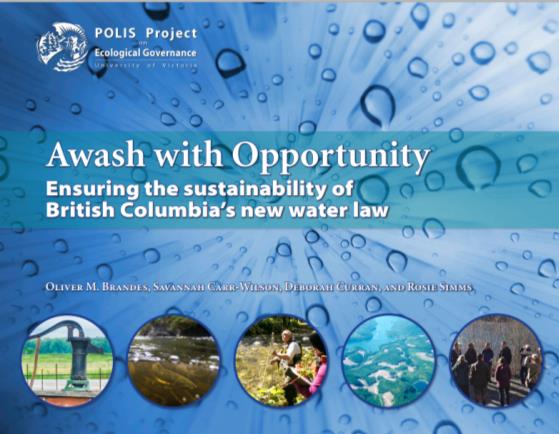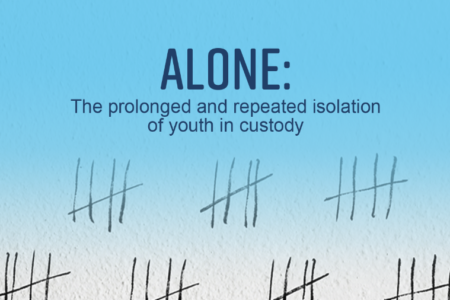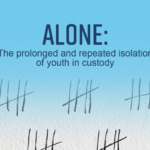About That New Water Act: What We Still Need
Rossland had a fairly dry summer in 2015, with watering restrictions imposed in additon to our water metering. Now that rain has returned, our reservoirs are filling up again, and there is even enough water that snow-making operations are well under way on Red Mountain. We can all breathe a sigh of relief — for now.
This item, about BC’s new legislation governing water use, is fresh from the POLIS Project on Ecological Governenance:
With the replacement of its over a century-old Water Act with the new Water Sustainability Act in 2014, British Columbia has a once-in-a-lifetime opportunity to modernize its freshwater legislation and usher in a new era of water stewardship. The Water Sustainability Act has many promising features that can better protect the province’s freshwater resources. Yet full implementation of the new Act hinges on passing critical supporting regulations that will provide the necessary details to make the Act fully functional.
Released today, a new research report from the University of Victoria’s POLIS Project on Ecological Governance outlines what is needed to put the “sustainable” in the Water Sustainability Act. This report provides a timely analysis of the core regulations required for the Water Sustainability Act to reach its full potential as a comprehensive and modern water law. Awash with Opportunity: Ensuring the Sustainability of British Columbia’s New Water Law offers clear recommendations to develop the necessary regulations based on leading international practices in five key areas: groundwater, environmental flows, monitoring and reporting, water objectives, and planning and governance.
“Mounting water concerns in the province underscore the urgent need to reform water management and the supporting legal structures,” says Deborah Curran, Hakai Professor in Environmental Law and Sustainability, and report co-author. British Columbia’s fresh water is under pressure from an array of threats, including climate change, population growth, and escalating and competing demands for water. Watersheds across the province are showing signs of stress, with recent mounting water issues – from unprecedented droughts to water quality degradation and conflicts over water use – only increasing the urgency to act.
If British Columbia does not change its approach to freshwater management to respond to these realities, the consequences may be significant, as demonstrated by the recent water crises experienced in California and Washington, and indeed globally.
“A comprehensive water law regime that includes a fully implemented Water Sustainability Act and a full suite of supporting regulations is a necessary condition to ensure that future water challenges do not become debilitating water crises,” says Oliver M. Brandes, Co-Director of POLIS, who authored the report together with Deborah Curran and colleagues at POLIS.
The report offers the Provincial government the specific advice and insights needed to move beyond crisis response toward a fresh partnership approach with shared roles and responsibilities to protect B.C.’s water resources now and into the future.
Editor’s Note: The POLIS project has released the full report, and also an “Executive Summary.”
The Executive Summary explains what the POLIS researchers think is necessary but still lacking in the five subject areas listed above, to ensure that the new Act lives up to the word “sustainability” in its title — regulations that:
1. Address Aboriginal water rights, and consultation obligations; ensure that there is more information about BC’s groundwater resources and that it is publically available; make groundwater licences conditional and subject to review, with fixed end-dates.
2. Establish regional environmental flow regime standards and critical flow thresholds; evaluate the cumulative impact of new and existing licences; and protect environmental flows through regulation and policy.
3. Require all water licence applicants to submit baseline flow and quality data, and require all water users to monitor withdrawals and flows, and report those data to government; and to require additional detail in monitoring and reporting in water-scarce areas through water sustainability plans or area-based regulations; and establish a publically-accessible water-use database, and follow through on commitments to produce annual “state of our water” reports.
4. Develop “strong and meaningful” water objectives that are specific, measurable and ecologically significant, and which must be considered by all decision-makers in land-use and resource-extraction decisions; conduct regular reviews of water objectives; and designate an independent third-party entity to conduct audits and determine whether or not water objectives are being met.
5. Develop and implement three binding water sustainability plans in the first five years of the Act coming into force, in partnership with First Nations as leaders and in co-governance roles; commit adequate resources to develop and implement water sustainability plans; and pilot shared decision-making models.
The Executive Summary explains briefly the rationale for the recommendations listed above. It is a four-page document, available here.
If you’re a bear for detail, you can see the full report:
Download a copy of Awash with Opportunity: Ensuring the Sustainability of British Columbia’s New Water Law
























